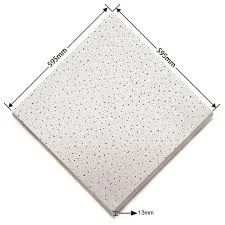Nov . 11, 2024 19:25 Back to list
plastic ceiling grid
Understanding Plastic Ceiling Grids An Overview
In modern interior design, ceiling grids play a significant role in enhancing both aesthetics and functionality. Among the various materials available, plastic ceiling grids have gained considerable attention. This article explores the advantages, applications, and installation of plastic ceiling grids, highlighting why they are becoming a preferred choice for many builders and interior designers.
What Are Plastic Ceiling Grids?
Plastic ceiling grids, primarily made of PVC or other durable plastic materials, serve as structural supports for hanging ceiling tiles. These grids are designed to create a suspended ceiling system, which provides a clean and organized look to any space while also allowing for easy access to utilities hidden above, such as electrical wiring or plumbing.
Advantages of Plastic Ceiling Grids
1. Durability One of the most significant advantages of plastic ceiling grids is their durability. Unlike metal grids that can corrode or rust over time, plastic grids are resistant to moisture, mold, and mildew. This makes them an ideal choice for environments like bathrooms, basements, and kitchens where humidity levels can fluctuate.
2. Lightweight Plastic grids are significantly lighter than their metal counterparts. This ease of handling during installation can lead to reduced labor costs and simpler transportation, making them a cost-effective choice for large renovation projects.
3. Design Flexibility Available in various styles, colors, and finishes, plastic ceiling grids can be selected to complement any interior design theme. Whether you are aiming for a modern look or a classic finish, plastic grids offer versatility that satisfies diverse design preferences.
plastic ceiling grid

4. Cost-Effectiveness From both material and installation costs, plastic ceiling grids tend to be more affordable than other grid systems. Their durability also means that they require minimal maintenance, further saving money in the long run.
5. Ease of Installation Installing plastic ceiling grids is a straightforward process that can typically be undertaken by DIY enthusiasts. They often come with pre-drilled holes, allowing for quick assembly and reducing the skill level required for installation.
Applications of Plastic Ceiling Grids
Plastic ceiling grids are used in a variety of settings, including
- Commercial Spaces Retail stores, office buildings, and restaurants often utilize plastic ceiling grids for aesthetic appeal and practicality. They enable easy access to fixtures and can accommodate lighting systems seamlessly. - Residential Properties In homes, plastic ceiling grids can enhance the appearance of rooms while providing a practical solution for hiding wiring and ducts. - Specialty Environments Labs, hospitals, and clean rooms benefit from the non-porous surface of plastic grids, making them easier to clean and reducing the risk of contamination.
Conclusion
Plastic ceiling grids emerge as a powerful tool in contemporary interior design, offering a blend of durability, cost-effectiveness, and visual appeal. Whether for commercial or residential use, their advantages make them a smart choice for anyone looking to enhance their space. As trends in building materials continue to shift toward sustainability and practicality, plastic ceiling grids are well-positioned to remain a staple in the industry. Investing in this innovative solution can significantly elevate both the functionality and appearance of any environment, demonstrating that sometimes, practical choices can also lead to magnificent results.
-
Quality Ceiling Trap Doors & Access Panels | Easy & Secure AccessNewsAug.30,2025
-
Durable Ceiling T Grid Systems | Easy InstallationNewsAug.29,2025
-
PVC Gypsum Ceiling: Durable, Laminated Tiles for Modern SpacesNewsAug.28,2025
-
Pvc Gypsum Ceiling Is DurableNewsAug.21,2025
-
Mineral Fiber Board Is DurableNewsAug.21,2025
-
Ceiling Tile Clip Reusable DesignNewsAug.21,2025







